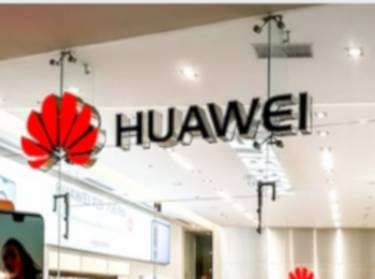The order extends to 68 affiliates as well, including some in other countries like Canada, Japan, Brazil, the UK, Singapore and others.
But the broader fallout could also affect American companies. According to the South China Morning Post, Greater China is Apple’s third largest market, contributing about 20% of revenue in 2018, while China, including Hong Kong, accounted for 67% of Qualcomm's sales last year and 17% of Broadcom's revenues.
Intel depends on China to such an extent that it reduced its full-year revenue forecast last month and missed analysts’ estimates for the first quarter as its China business was hit by a slowdown.
|
|
Huawei gear comprises less than 1% of wireless equipment in US networks. Ericsson and Nokia each account for 48%, while Samsung Electronics has 3% of the US$30 billion-a-year American market for mobile equipment, according to analyst Stefan Pongratz of Dell’Oro Group.
On the consumer business front, Huawei has anticipated some kind of adverse reaction from the US and has managed to largely become self-sufficient as far as components go.
But it needs a lot of parts from American companies to build its networking gear and the US move will definitely affect its ability to keep up with 5G network building commitments, both in China and other countries where it has won contracts. Last year, Huawei reported US$105 billion in revenue; the figure for 2019 is likely to be lower as the ban begins to bite.
Contract manufacturer Flex derives 7% of its revenue from Huawei, Broadcom 6% and Qualcomm 5%.
According to a listing in November 2018, Huawei considers 92 of its suppliers as core: of these 33 are US companies, 25 from mainland China, 11 from Japan and 10 from Taiwan. The remainder are from countries and regions including Germany, South Korea and Hong Kong.
The SCMP quoted Mo Jia, an analyst from the research firm Canalys, as saying that since the middle of 2018, Huawei had been trying to lessen its dependence on suppliers like Qualcomm and shifting to sources like Taiwan-based MediaTek. Huawei had also been building up a reservoir of US-made components so that it could keep going for at least six months in case there was some adverse action from the US.
Trump has signed the Huawei orders now because he had adopted a protectionist stance when he ran for office in 2016; seeing that it worked, he may well be calculating that he will be able to cow Beijing into a trade deal and thereby have something to wave around when he runs for re-election next year.
Given his erratic nature and unpredictability, one cannot rule out him completely changing tack in order to make himself look good. In the case of ZTE, he did a complete backflip and allowed the company to trade in the US after it was hit with a seven-year ban on using American-made parts in its equipment in April 2018 for violating the terms of an agreement over breaking sanctions on exporting products to Iran and North Korea.
ZTE shut down its main business activities in the US on 9 May last year. But following Trump's intervention, a deal was worked out for the Chinese firm to return to business by paying a fine of US$1 billion, changing its management team and depositing US$400 million in an escrow account against possible future transgressions.
One doubts, however, that Huawei will be counting on any such change of heart from Trump; the US actions have nothing to do with national security as claimed, and everything to do with preventing Beijing from overtaking Washington as the biggest global economy sometime in the near future.










































